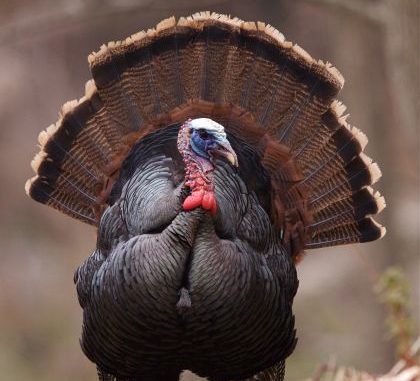
Adult gobblers could be hard to come by, LDWF says.
If you were trying to find Jimmy Stafford in early February, chances are you’d have to call his cell phone and keep your fingers crossed.
That’s because the signal the Louisiana Department of Wildlife & Fisheries biologist was receiving from the center of the Kisatchie National Forest in the north-central part of the state left something to be desired.
But in between stops to check on bait sites where he was trapping turkey, Stafford took some time to talk about what he expected of the upcoming turkey season.
“It’s hard to predict, but I think this season will be fairly similar to what we saw last year,” Stafford said. “The hatch this year has been better than it was in previous years, so we should have plenty jakes.
“The only thing is that there may be fewer adult birds to come by. We had a bad hatch in some spots in 2011, and most of the adults that are killed every year are 2-year-old birds.”
Success during the past season was largely dependent on the area being hunted, and Stafford said 2013 should set up in the same manner.
The season opens on private land for youth and physically challenged hunters on March 16-17, with the main season kicking off March 23 in all zones.
Stafford said the best area looks as if it will be the place he was trapping birds last month — the western longleaf part of the state that contains a lot of Kisatchie.
“It’s been a much better hatch this year than the past few years, and still it had been a reliable area, as far as the harvest goes. It’s bounced back,” he said. “Also, the North Louisiana area like Claiborne, Union (parishes) are pretty good, and have been the past few years. There’s been a good harvest there.
“Also Vernon, Sabine, Natchitoches, Rapides, Beauregard (have been productive).”
Stafford said the upland pine areas outside of flood plains have traditionally been solid turkey grounds, as well.
Not all is bright on the statewide gobbler front, however.
“I’m still concerned about the areas in the lower Atchafalaya, (Basin)” Stafford said. “With the flood there in (May and June) 2011, that hasn’t bounced back nearly as quickly as I hoped it would. That area we’ve rated poor.
“Now, that’s the areas inside the levees that flooded when the Morganza Spillway was opened. It displaced the birds. The areas there outside of the levees should be OK.”
While the amount of water that flooded the lower Basin nearly two years ago had a measured mortality on the turkey population, the near-constant rainfall the state endured in early and mid-January shouldn’t have a major effect on hunting this spring, Stafford said.
“The only ones with some difficulty may be toward Evangeline (Parish), up Interstate 49 north of Opelousas, near the Red River,” Stafford said. “A lot of that area is still inundated with backwater. That certainly takes their habitat away from them.
“They can wade in a few inches of water and eat on crawfish, something like that. But when that water gets to be a foot or more, and it is in spots there, they have to move.”
The LDWF rates turkey grounds with four different grades — excellent, good, fair and poor. The positive news for the statewide outlook is that the only area rated as poor in 2012 was the lower Atchafalaya area.
Conversely, there were no areas that were ranked excellent, Stafford said.
Areas rated as fair included Southeast Louisiana and the northwestern loblolly hardwood grounds near the Louisiana border with Arkansas.
The area rated good, as earlier mentioned, was the wide swath of land that makes up the western longleaf areas.
With no drastic change noted since the last hatch, Stafford said Louisiana hunters should be expecting more of the same when they take to the outdoors in mid-March.
“Not much different is the only way to say it, really,” Stafford said. “I think (the harvest) will be elevated a bit by the number of jakes we should see. And if there are a few less adult birds, some areas will be affected, but others won’t. Some hunters, they won’t even notice a bump in the road.”


